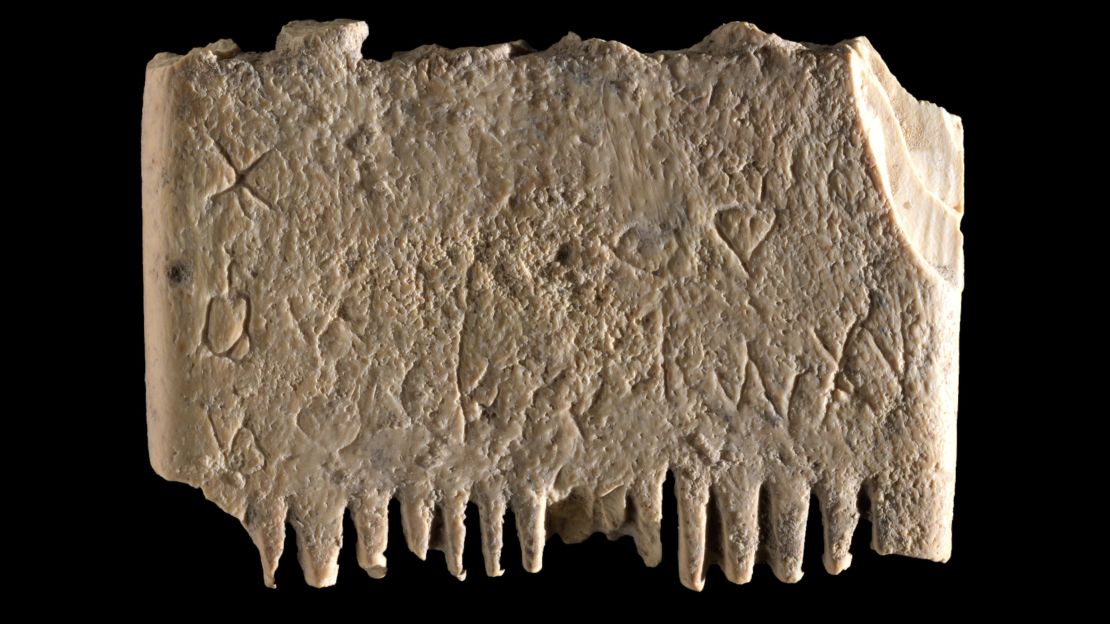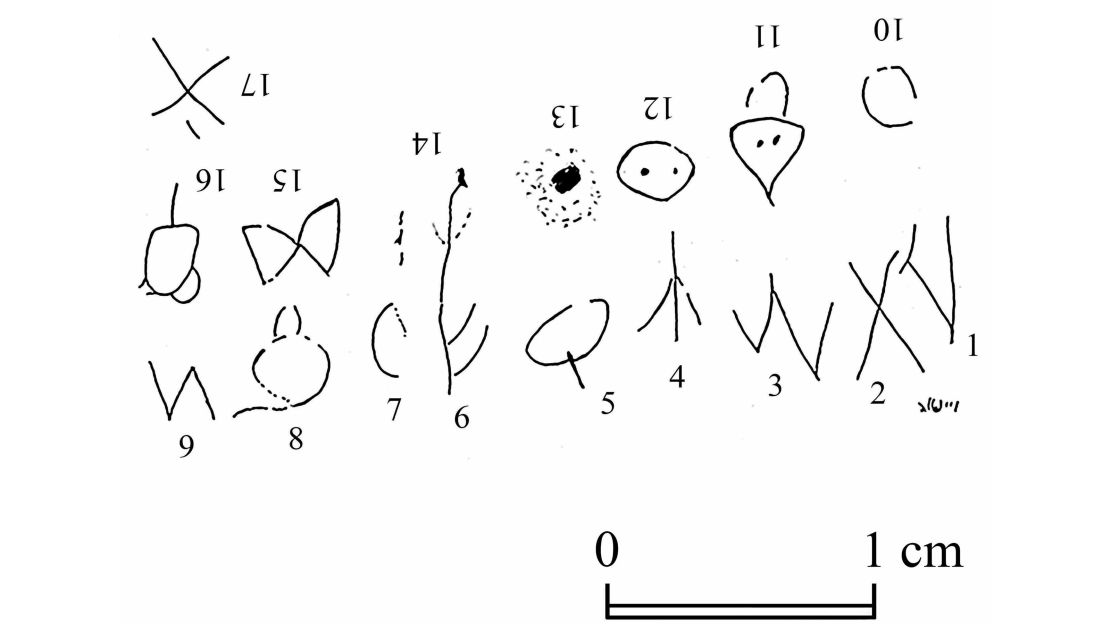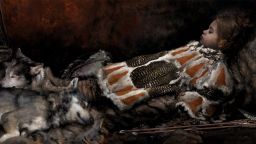Sign up for CNN’s Wonder Theory science newsletter. Explore the universe with news on fascinating discoveries, scientific advancements and more.
A seven-word inscription discovered by accident on a 3,700-year-old lice comb is the oldest known sentence written in an alphabet, according to a new study.
The inscription written on the ivory comb is in Canaanite, the earliest alphabet, and the source of the Latin one used today to write English and many other European languages. The words are a humble plea, perhaps shared by parents of young children today: “May this tusk root out the lice of the hair and the beard.”
Small clusters of Canaanite letters have been identified on fragments of pottery and arrowheads, but this is the first time scholars have found a complete sentence written in what Yosef Garfinkel, a professor of archaeology at the Hebrew University of Jerusalem, said was the first alphabet-based language, making it a landmark discovery in the history of the human ability to write.
“Nothing like this was found before. It’s not the royal inscription of a king … this is something very human. You’re immediately connected to this person who had this comb,” said Garfinkel, a coauthor of the study that published in the Jerusalem Journal of Archaeology.
The very earliest writing system originated around 5,000 years ago and was used by ancient Sumerians of Mesopotamia (in what’s now Iraq). Like Egyptian hieroglyphics, the system, known as cuneiform in its later stages, relied on hundreds of pictograms to represent words, ideas and sounds. Garfinkel said that Canaanites were the first to use letters that represented sounds in their writing system, which subsequently evolved into the Phoenician, Greek and ultimately the Latin alphabet that’s most commonly used today.
“The Canaanites invented the alphabet. … Nowadays every person in the world can read and write using the alphabet system. This is really one of the most important intellectual achievement of humankind,” he said. “When you are writing in English, you’re really using Canaanite.”

Accidental discovery
The comb was unearthed in 2016 at an Israeli archaeological site called Lachish, a Canaanite city state in the second millennium BC. However, it wasn’t until 2021 when Madeleine Mumcuoglu, a research associate at the Hebrew University of Jerusalem, first noticed the engraving when she zoomed in on an iPhone snapshot of the comb after completing her study of the lice remains found on the artifact.
“I just took a picture with my iPhone. And it was not good enough. So I brought it to a very strong light and took another picture,” she said.
Mumcuoglu was surprised to see the shallow letters on the small comb. After careful study, the team of researchers identified 17 letters, which form the seven words.
The researchers were not able to directly date the comb despite two attempts to radiocarbon date it, nor were they able to extract DNA from the lice remains embedded in the comb. The study team believes it dates from around 1700 BC based on comparison of the letters with those on pottery or ceramics with a known age.
Christopher Rollston, a professor of Northwest Semitic languages and literatures at George Washington University, said there was “some room for debating the precise date” of the comb, but agreed that the inscription dates to first half of the second millennium BC and said the work done by the team to decipher the inscription was “brilliant.” He was not involved in the study.
“The fact that this inscription is about ordinary life is especially fascinating. Throughout human history, lice have been a perennial problem,” he said via email. “We can only hope that this inscribed comb was useful in doing that which it says it was supposed to do: root out some of these pesky insects.”

The comb looks similar in design to today’s lice combs made of plastic or metal. One one side, there are 14 fine teeth to remove lice and their eggs, while on the other there are six more widely spaced teeth that were used to untangle knotted hair. Head lice have long bothered humans. The earliest direct evidence is a 10,000-year-old intact louse egg on a Brazilian mummy’s hair, but DNA analysis has suggested that we’ve been coexisting with head lice much longer.
The inscription and the fact that the comb was made from elephant ivory suggested to Mumcuoglu that it was perhaps a gift for somebody important. “From my point of view, it was an elite product.”
She was also puzzled by its small size — it measures 3.5 centimeters by 2.5 centimeters (1.4 inches by 1 inch).
“Maybe you kept it in your pocket and used it discreetly. Maybe at that time people also felt ashamed to have head lice.”








